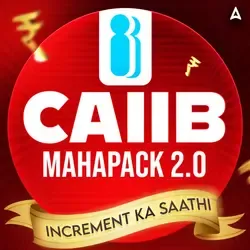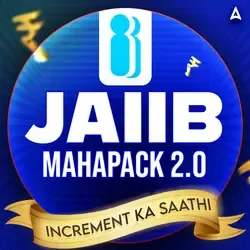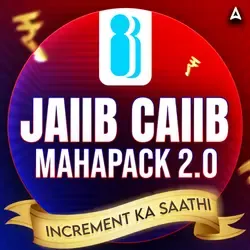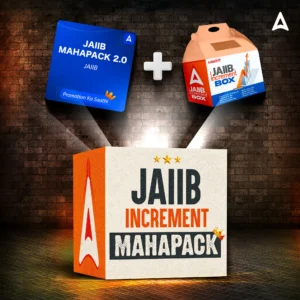Table of Contents
Support Services- Marketing of Banking Services or Products Notes: The Indian Institute of Banking and Finance(IIBF) has announced the JAIIB Exam Date for the November session and the candidates are preparing in a full-fledged manner. JAIIB Exam 2022 is scheduled to be on the 12th, 13th, and 20th of November 2022. JAIIB Exam has three papers: Principles and Practices of Banking(PPB), Accounting and Finance for Bankers(AFB), and Legal and Regulatory Aspects of Banking( LRAB). To assist the aspirants in their preparation and help them to score better we have come up with the notes of Support Services- Marketing of Banking Services or Products(Module D). In the JAIIB PPB Paper, there are 5 Modules and the fourth module’s notes are provided in the article below.
Marketing of Banking Services Unit 1: Introduction of Marketing
Marketing Management: The process of planning and implementing the conception, pricing, promotion and distribution of goods, service, and ideas to establish exchanges with target groups that satisfy the intention of customer and organization is called Marketing Management. Analysis, Planning, Implementation and Control are the main functions of Marketing Management. The main features of this service are Intangibility, Perishability, Inseparability and Heterogeneity. Physical Goods Services are Tangible or Intangible; Homogeneous or Heterogeneous; Production and Distribution are separated from consumption; Production, Distribution and Consumption are simultaneous process; A thing, an activity or process; Core value produced in factory or Core value produced in buyer-seller interactions; Customers do not participate or Customers participate in the production; Either can be kept in stock or cannot be kept in stock; Transfer of ownership or No Transfer of Ownership.
Marketing of Banking Services Unit 2: Social Media Marketing
Marketing techniques that are focused on social media sites such as Twitter, Facebook, Instagram and Youtube etc. is called Social Media Marketing. Here Social Media is utilized as a communications tool that makes the companies accessible to those interested in their product and make them visible to those who have no knowledge of their products.
Scope in Social Media Marketing- In India the extent of Social Media Marketing is very huge. An earlier user has said that, Facebook has more than 20 million Indians. Most of the youth-focused brands already have an active social media presence. But the trend might not have caught the brands targeting other age segments. In India Internet is being used at a rapid rate by all the segments of the society which will surely promote the growth of Social Media. We are seeing lots and lots of brands, both big and small, promoting themselves on social media. If employed properly, it can even help start-ups rise to prominence.
Popular Social Marketing Networks:
- Twitter- Twitter is the simplest of all social media platforms but it is a fun loving and interesting platform. Messages are limited to 140 characters or less. On Twitter we can post a link, share an image, or even share one’s thoughts with their favorite celebrity. The Interface of Twitter is easy to learn and use. A new user can set up a new profile only in minutes.
- Facebook- Facebook is the site where where a user can find friends, colleagues, and relatives all floating around. On Facebook a person can share photos, links, and also his personal thoughts. Individuals can also show their support to brands or organizations by following their page.
- LinkedIn- The social media sites that is always projected towards business is LinkedIn. This platform is very important for meeting customers, getting in touch with vendors, recruiting new employees, and keeping up with the latest in business or industry news. Any unemployed can make his profile on LinkedIn and be in touch with the recruiters.
- Xing- Xing is another professional networking and recruitment site. Xing has the global presence and focus that is not available in LinkedIn. Although it can be mistaken for a job search portal, the site actually has a number of features and communities that make it easy to develop relationships with suppliers, colleagues and even thought leaders within industry.
- Google+: Google has provided its users a social site that has a little something for everyone. In Google+ new content can be added, topics can be highlighted with hashtags, and even separate contacts into circles. A Google+ profile only takes a few minutes to get set up.
- Pinterest- Pinterest has made a huge impact on social media in the last few years. Pinterest is popular especially among women and do-it-yourself crowd. Through Pinterest we can share pictures, creative thoughts, or before-and-after pictures of projects that others can pin, save, or duplicate.
- YouTube- YouTube is a video sharing service and through this service it has become so popular that its catalog of billions and billions of videos has become known as “the world’s second-largest search engine” in some circles. The site has everything from first-person product reviews to promotional clips and “how-two” instruction on virtually any topic or discipline. The users can share, comment and also can subscribe the channels with which they are interested.
- Instagram- When you are looking for a quick, convenient connection between the camera feature of your smart phone and all your social profiles, then Instagram is the best option. Instagram allows users to upload media that can be edited with filters and organized by hashtags and geographical tagging. Posts can be shared publicly or with followers that an user has approved. Users can browse other users’ content by tag and location, view trending content, like their photos, and can also comment on it.
Banks in India and Social Media Marketing: Growth of Indian Banking Industry can be seen on Social Media platforms like Facebook, Twitter, YouTube etc. The Banking sector in India has proven that they are not only meant for opening saving bank accounts, credit cards, investments, wealth management, mutual funds, insurance and other banking activities. As the use of Social Media is increasing in India, banks have understood that likes, tweets, shares do matter to engage with the young generation. A more globalized approach and increasing competition, banks have increased their marketing budgets and Social Media is one of the major part of it. There are banks that we have seen, using social platforms as another customer care, using them to showcase their thought leadership, using them to launch new products, endorsing celebrities and many more. To discuss products and services Social Media Platform is being used. Consumers like to use services which not only tell them about themselves but also listen to them. A few private banks like ICICI and HDFC have begin to understand this shift and have started to be engaging rather than selling but majority of the banks in India still have a long way to go.
Marketing of Banking Services Unit 3: Consumer Behavior and Product
Product: A product is defined as an item which is produced through any process and that can be offered to the market for consumption and which has the ability to satisfy the need and want of the market. The product has its personality through:
- Core Value
- Associated Features
- Brand Name and its Logo
- Package and Label
Product Planning: Product Planning Process comprises of determining the strategies in respect of elements like Product Line, Product Mix, Branding, Packaging and New Product Development.
Product Life Cycle: The life cycle of a product revolves around these stages: Introduction, Growth, Maturity and Decline.
New Product Development: The Process of Product Development consists of five main stages:
- Screening of Idea
- Testing of Concept
- Development of the product
- Market Testing
- Launching Commercially
Diversification: Getting Attractive opportunities that are not included in the existing businesses of the firm is called Diversification. Diversification is of three types:
- Concentric Diversification
- Horizontal Diversification
- Conglomerate Diversification
Product Development has other features like Branding, Line Extension, Brand Extension, Multi-brands and New Brands.
Packaging are of three types:
- Primary Package
- Secondary Package
- Shipping Package
Marketing of Banking Services Unit 4: Pricing
Pricing can be of various kinds such as:
- Cost Based Pricing
- Value Based Pricing
- Competition Based Pricing
- Group Pricing
- Mark up Pricing
- Absorption Cost Pricing
- Target-return Pricing
- Marginal Cost Pricing
- Perceived value pricing
- Value Pricing
- Going – Rate Pricing
- Auction- Type Pricing
Auction- Auction is a public sale where items are sold to the person who offers to pay the highest amount of money. English Auctions, Dutch Auctions and Sealed- Bid Auctions are the different types of Auctions.
Strategies of Pricing:
- Geographical Pricing: Geographical Pricing includes different locations, different prices, and cost of transportation
- Price Discounts and Allowance : Cash Discount, Quantity Discount, Functional Discount, Seasonal Discount
- Psychological Pricing: Higher priced product are of better quality is a misconception among many consumers. Sellers take the advantage of this myth and set the price in a particular range which creates an impression about the product belonging to a particular class.
- Promotional Pricing
- Discriminatory Pricing: when different prices are changed to different buyers.
- Product-Mix Pricing
- Market-skimming Pricing: Initially the product is priced higher, and after a period of time it is reduced to influence more buyers, with a view to skim the revenues layer to layer from the market.
- Market-penetration Pricing: Initially setting the price low in order to sneak into the market quickly attract a large market share.
Marketing of Banking Services Unit 5: Distribution
Distribution Channel has functions such as Market Information, Promotion, Contact, Matching, Negotiation, Product Information, Physical Distribution, Financing and Risk Taking
The following factors are used by the producers to choose the channels for distribution: Characteristics of the product, Market Characteristics, Customer Characteristics, Resources of the company, Competition and Product Lines
Related Posts:
Marketing of Banking Services Unit 6: Channel Management
Channel Decision is mainly affected by these components: Intangibility, Variability, Perishability, Inseparability and Client Relationship.
- Primary distribution outlets for banking services are Branches. In a particular location there are fixed branches and customers are required to visit the branches.
- Other Channels are Tele-banking and Call Centres, ATMs, Personal Computer Plastic Cards, Virtual Branches
The Intermediaries in Banking Services are the Direct Sales Agents, Automobile Dealers and Merchant Establishments.
Marketing of Banking Services Unit 7: Role of Promotion in Marketing
Promotion is one of the basic elements of the market. The main goal of Promotion is to increase the brand awareness, create interest, generate sales or create the loyalty of brand among the people. In the promotional mix or promotional plan one of the key elements is Promotion. This involves the following aims:
- Persuasion
- Inform
- Reminding
- Reinforcing
The tools used in Promotion Mix are: Advertising, Sales Promotion, Public Relations, Personal Selling and Direct Marketing.
Strategies of Promotion-Mix: There are two basic promotion-mix strategies-
- Push Strategy – promotion efforts are directed at the channel members to induce them to purchase the products and sell them to the final customer.
- Pull Strategy – promotion efforts are directed to the final consumer to induce them to buy the product
Promotion Mix is influenced by: Choice of promotion mix are affected by the type of Product or Market, Buyers’ Readiness Stage and Product Life Cycle Stage
Marketing of Banking Services Unit 8: Role of Direct Selling Agent or Direct Marketing Agent in a Bank
Roles and Responsibilities of Direct Selling Agent or Representative: The main responsibility of the Direct Selling Agent is branch management and in-branch services, teller and platform services, financial product sales, customer services, and management of lending risk to retail customer base. The Agent constructs a client base for banking direct sales through prospecting, networking, and referrals. Direct Selling Agent or Representative’s role involves:
- Starts new business prospects in specific geographic areas through calls.
- Communicates with the existing customers to increase sales of the bank’s products and services.
- For a direct Selling Agent responsibility high school diploma or equivalent and 2-4 years of experience in the field or in a related area is essential.
- Having the standard concepts, practices, and procedures within a particular field.
IBA(Indian Bank’s Association) Model Code of Conduct for Direct Selling Agents
- Tele-calling a Prospect: A prospect is to be called for availing a bank product or any bank related product only under the following circumstances:
a) When prospect has expressed his wish to attain a product through the bank’s internet site or call centre or Branch or through the Relationship Manager at the bank or has been referred to by another prospect or customer or is an existing customer of the bank who has given consent for accepting calls on other products of the bank.
b) When the prospect’s name or telephone no or address is available and has been taken from one of the lists or directories or databases approved by the DSA Manager or Team leader, after taking his/ her agreement.
The TME should not call a person whose name/number is flagged in any “do not disturb” list made available to him/her.
- When you may contact a prospect on the telephone
Telephonic contact must normally be limited between 09:30 AM to 07:00 PM. However, it may be ensured that a prospect is contacted only when the call is not expected to inconvenience him/her. Calls earlier or later than the prescribed time period may be placed only when the prospect has expressly authorized TME/BDE to do so either in writing or orally
- Can the prospect’s interest be discussed with anybody else?
A prospect’s privacy must be respected by DSA. The prospect’s interest may normally be discussed only with the prospect and any other individual/family member such as the prospect’s accountant/secretary /spouse, authorized by the prospect.
- Leaving messages and contacting persons other than the prospect.
Calls must first be placed to the prospect. In the event the prospect is not available, a message may be left for him/her. The aim of the message should be to get the prospect to return the call or to check for a convenient time to call again. Ordinarily, such messages may be restricted to:
Please leave a message that ______________ (Name of officer) representing HDFC Bank called and requested to call back at __________ (phone number)”.
As a general rule, the message must indicate:
That the purpose of the call is regarding selling or distributing a bank product of HDFC Bank
- No misleading statements/misrepresentations permitted
TME/BDE should not –
• Mislead the prospect on any service / product offered;
• Mislead the prospect about their business or organization’s name, or falsely represent themselves.
• Make any false / unauthorized commitment on behalf of HDFC Bank for any facility/service.
- Telemarketing Etiquettes
Pre Call- No calls prior to 09:30 AM or post 07:00 PM unless specifically requested, serial dialing should be avoided, Calling can only be done when the list is cleared by the team leader
During Call: First make your identification, company name and its principal clear, then request for proceeding with the call, in case you are denied then apologize and disconnect the call politely and if accepted then state the reason of your calling, Always offer to call back on landline, if call is made to a cell number, Argument or any interruption should not be done, To the extent possible, talk in the language which is most comfortable to the prospect, the conversation should be limited to business matters, If the customer plans to buy the product then make him understand the “Most Important Terms and Conditions”, For next call or visit details take the confirmation, Provide your telephone no, your supervisor’s name or your bank officer contact details if asked by the customer. Always remember to thank the customer for his/her valuable time
Post Call: Customers who have expressed their lack of interest for the offer should not be called for the next 3 months with the same offer
– Feedback should be provided to the bank on customers who have expressed their desire to be flagged “Do Not Disturb”
– Never call or entertain calls from customers regarding products already sold. Advise them to contact the Customer Service Staff of the bank.
- Gifts or bribes
TME/BDE’s must not accept any type of gifts or bribes from prospects. If the TME/BDE is offered a bribe or payment of any kind by a customer then they should report the offer to his/her management.
- Precautions to be taken on Visits or Contacts
BDE should :
• Maintain proper distance from the prospect.
• Not enter the prospect’s residence/office against his/her wish
• Not visit in large numbers – i.e. not more than one BDE and one supervisor, if required.
•Prospect’s privacy should be respected.
- If the prospect is not present and only family members/office persons are present at the time of the visit, he/she should end the visit with a request for the prospect to call back.
• Provide his/her telephone number, supervisor’s name or the concerned bank officer’s contact details, if asked for by the customer.
• Limit discussions with the prospect to the business – Maintain a professional distance.
- Other important aspects – Appearance and Dress Code
BDE’s must follow a proper dress code, Men should be in trousers and shirt and women should follow formal attire like saree, suit, etc. Jeans and/or T Shirt, open sandals are not considered appropriate.
- Handling of letters and other communication
Any communication sent to the prospect should be only in the mode and format approved by the Bank.
Marketing of Banking Services Unit 9: Marketing Information System
Marketing Information System is mainly used for complex marketing activity, for exploding knowledge or information, communication gap, prompt decisions and non-price competition. The Information that is required are about market forces, about the market behavior of bank as well as the Internal Information. The complete Marketing Information System comprises of four subsystems which are:
- Internal Record System
- Market Intelligence System
- Marketing Research System
- Marketing Management and Science System
FAQs: Support Services-Marketing of Banking Services
Q.1 Where can we get the notes of Support Services-Marketing of Banking Services for JAIIB PPB Exam 2022?
Ans. The notes of Support Services- Marketing of Banking Services is provided in the article above.
Q.2 How many units are covered in the notes of Support Services-Marketing of Banking Services?
Ans. 9 Units are covered in the notes of Support Services- Marketing of Banking Services.

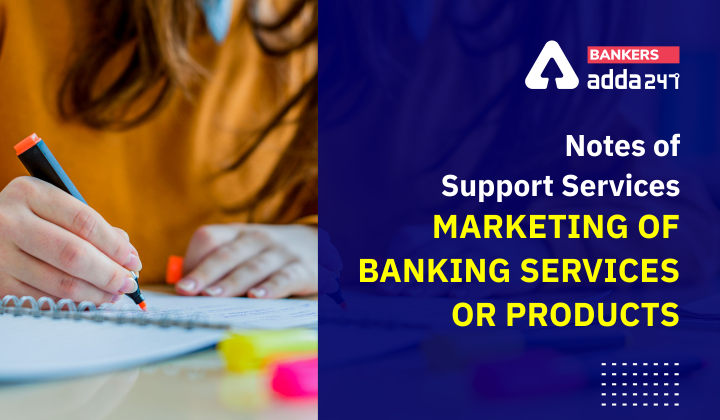




 GA Capsule for SBI Clerk Mains 2025, Dow...
GA Capsule for SBI Clerk Mains 2025, Dow...
 The Hindu Review October 2022: Download ...
The Hindu Review October 2022: Download ...
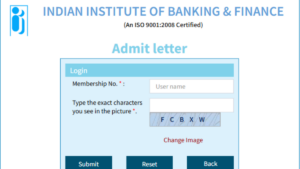 JAIIB Admit Card 2025 Out, Download Call...
JAIIB Admit Card 2025 Out, Download Call...

